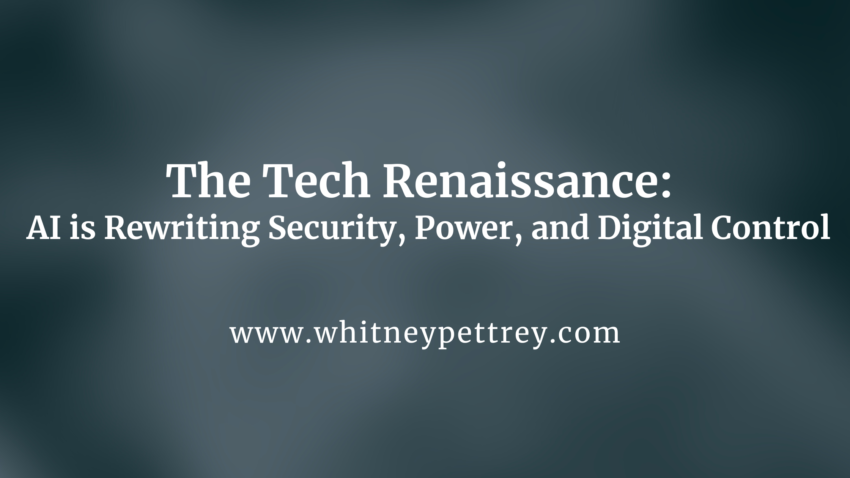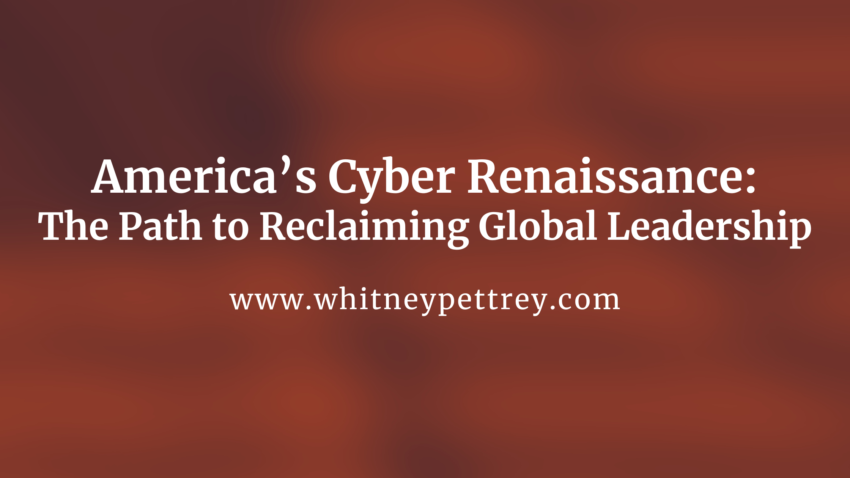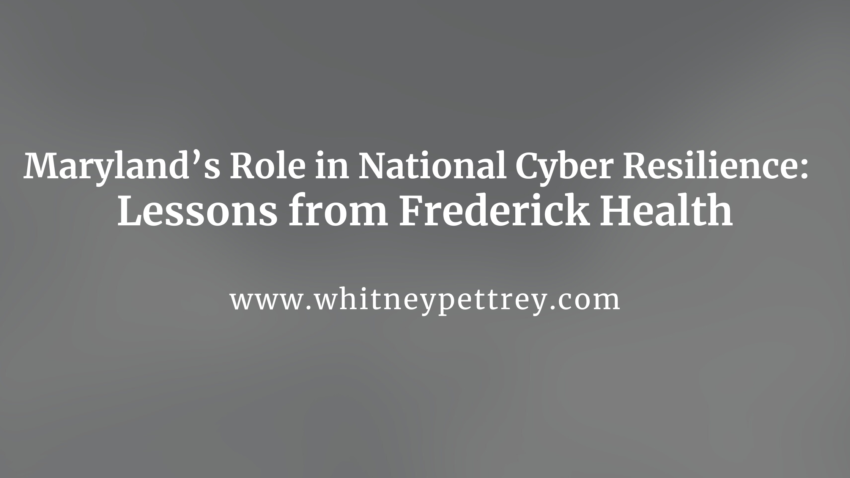The United States is entering a rare moment: hosting back-to-back Olympic Games in Los Angeles (2028) and Salt Lake City (2034). For most, these are sporting milestones. For national security leaders, they are something else entirely — signals of whether America’s infrastructure, continuity, and public trust can endure under global scrutiny. This article explores why red team and blue team drills must extend far beyond host cities into overlooked crucibles like Ocala, Waynesboro, Frederick, and Jefferson. It examines the convergence of public and private sectors, the role of ISACs and the Capitol Cyber Initiative, and the amplifying rigor of The Vermont Group. Resilience in this moment is not ceremony; it is doctrine — proof that America’s systems can hold when adversaries are most incentivized to test them.
Breached in Silence: When Compromise Precedes Awareness
Most breaches don’t trigger alerts, they rewrite expectations. In compromised state systems like Ashbury, workflows continue, budgets pass, and records update, but none of it aligns. This isn’t failure. It’s adaptation under adversarial control. When the breach redefines what normal looks like, detection becomes disbelief, and recovery becomes a mere formality. This piece explores how silence becomes signal, how timelines are seized, and why institutional tempo, not technology, determines who still owns command.
The Tech Renaissance: AI is Rewriting Security, Power, and Digital Control
The age of passive security is over. AI-driven enforcement is already determining who has access, who is restricted, and who is erased from digital systems without oversight or debate. This shift is no longer about cyber defense alone but governance, economic power, and digital sovereignty. Security is no longer just a function; it is an automated force shaping who can participate in the global system and who is quietly locked out. From financial institutions and enterprise security to geopolitical influence, AI is redefining the boundaries of power. The Tech Renaissance is here, and those who fail to define it will not just be left behind; they will be controlled by it.
When Seconds Matter: The Critical Flaw in Crisis Preparedness
Emergency response systems were designed for localized crises, not for cyber-physical disruptions that paralyze 911 dispatch, misdirect public alerts, and manipulate infrastructure in real-time. As adversaries exploit this blind spot, outdated crisis doctrines ensure systemic failure. The threat landscape has evolved from ransomware-crippled municipalities to state-sponsored cyber attacks on critical infrastructure, yet emergency preparedness remains dangerously outdated. This analysis exposes the critical flaw in crisis response and presents a framework for integrating cyber resilience before the next attack turns simulation into catastrophe, leaving decision-makers with seconds to react before total collapse.
Cybersecurity’s Identity Crisis: The Architects Have Left the Building
Cybersecurity was never meant to be a desk job. It was built by minds that saw beyond compliance, beyond governance, by those who understood that security is an instrument of power, intelligence, and survival. Yet today, the architects of security have walked away. The best minds are no longer waiting for certifications, career paths, or permission. They are moving faster than the industry itself, reshaping the future of security in spaces where intelligence, velocity, and execution matter more than tenure.
This is not a moment for retrospection, it is a moment for redefinition. If cybersecurity is to remain relevant, it must reclaim its place as the ultimate proving ground, a domain where those who refuse to be constrained by convention step forward, shape the future, and take control.
The next evolution of security is already unfolding. The only question is, who will command it?
The $X Billion BYOD Gamble: The Hidden Cost of Remote Work Security
For years, enterprises have absorbed the rising costs of cybersecurity breaches, treating them as inevitable rather than existential. But as threats escalate in scale and sophistication, one truth becomes unavoidable: the decentralized workforce is a prime target, and complacency is no longer an option. Security is not just an IT investment; it’s an operational imperative. Employees who demand flexibility must also recognize their role in mitigating risk. The organizations that fail to act decisively will soon find themselves at a crossroads: adapt or suffer the consequences of inaction. The question is not if change is coming, it’s whether enterprises will lead the shift or be forced into it by catastrophic failure.
The Networked Achilles’ Heel: How Master-Planned Communities Are Engineering Their Own Vulnerabilities
Master-planned communities promise security, exclusivity, and efficiency—but beneath their pristine digital infrastructure lies an unspoken vulnerability. As real estate developments become hyperconnected ecosystems, they also become prime targets for cyber adversaries. Unlike major cities with robust oversight, these private enclaves operate on fragmented security models, centralized network dependencies, and unregulated smart grids—all of which introduce systemic risks investors and policymakers have yet to confront. This article dissects the unseen attack surfaces within smart communities, the cascading financial consequences of cyber-physical breaches, and the urgent need for proactive security leadership. In a market shift already underway, the only question left is: who will act before the first catastrophic breach forces irreversible change?
America’s Cyber Renaissance: The Path to Reclaiming Global Leadership
America’s cybersecurity leadership is at a crossroads. While global adversaries sharpen their offensive capabilities, the U.S. must move beyond reactive defense and reclaim its position as the dominant force in cybersecurity. This is not just about new technology—it’s about a strategic, unified effort between policymakers, private enterprises, and the next generation of cyber defenders. How do we secure our digital future, fortify national resilience, and stay ahead of emerging threats? The answers lie in decisive action, bold investments, and a commitment to innovation. Read more to discover the strategic path forward.
Maryland’s Role in National Cyber Resilience: Lessons from Frederick Health
In January 2025, a ransomware attack on Frederick Health illuminated both the vulnerabilities in healthcare systems and the unique opportunity for Maryland to lead in shaping national cybersecurity resilience. Leveraging its unmatched ecosystem of federal resources, private innovation, and collaborative initiatives, Maryland is poised to transform this crisis into a model for safeguarding critical infrastructure. Discover how public-private partnerships and proactive strategies can redefine resilience and inspire confidence across the nation.
Frameless Resilience: Transforming Leadership Through First Principles
As cyber threats evolve faster than traditional defenses, resilience requires a bold, frameless approach. This article delves into the transformative power of adaptive ecosystems, immersive simulations, and first-principles thinking, reimagining how leaders navigate uncertainty. Learn how abandoning static systems and embracing psychological agility, collaboration, and foundational truths can empower policymakers, educators, and infrastructure leaders to thrive amidst complexity. With actionable strategies and real-world insights, this article equips you to redefine resilience and lead through innovation.









